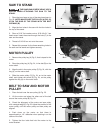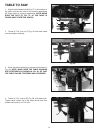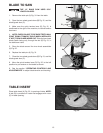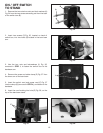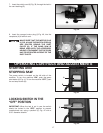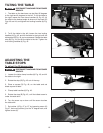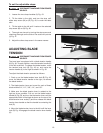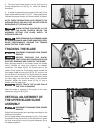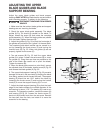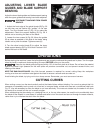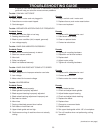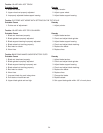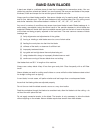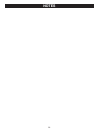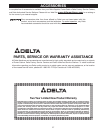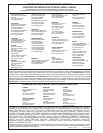
22
ADJUSTING LOWER BLADE
GUIDES AND BLADE SUPPORT
BEARING
Adjust the lower blade guides and blade support bearing
after the upper guides and bearing have been adjusted.
DISCONNECT MACHINE FROM POWER
SOURCE.
1. Adjust the front edge of the guide blocks (B) Fig. 56
so that they are just behind the “gullets” of the saw
teeth. Turn the knurled knob (C) Fig. 56 to make this
adjustment. Check the support bearing (D) Fig. 56. It
should not be touching the back of the blade.
2. Loosen the two screws (A) Fig. 56. Move the guides
(B) as close as possible to the side of the blade, being
careful not to pinch the blade. Tighten screws (A).
3. Turn the other knurled knob (E) to adjust the lower
blade support bearing (D) Fig. 56 so that it is about 1/64"
behind the back of the blade.
Fig. 56
OPERATIONS
Before starting the machine, insure that all adjustments are properly made and the guards are in place. Turn the upper
wheel by hand to make sure that everything is correct BEFORE turning on the power.
Keep the top blade guide (and guard) within 1/8" of the work piece at all times. Do not force the material
against the blade. Light pressure on the work piece will produce a smoother cut, and prevent excess friction, and
heating of the blade.
KEEP THE SAW BLADE SHARP. Very little forward pressure is required for normal cutting. Keep the workpiece
moving at a slow and consistent rate against the blade to ensure a smooth and accurate cut.
Avoid twisting the blade, by trying not to turn sharp corners. Remember, you must saw around corners.
CUTTING CURVES
When cutting curves, turn the stock carefully so that the blade follows without twisting. If a curve is so abrupt that it is
necessary to repeatedly back up and cut a new kerf, a narrower blade, a blade with more set, or additional relief cuts
Fig. 57, may be necessary to allow the blade to cut more efficiently. The more set a blade has, the easier it will allow
the stock to be turned, but the cut is usually rougher.
When withdrawing the piece being cut, changing the cut, or for any other reason, be careful not to accidentally draw
the blade off the wheels. In most cases, it is easier and safer to turn the stock and saw out through the waste material,
rather than try to withdraw the stock from the blade.
Fig. 57
A
B
A
B
E
C
D



